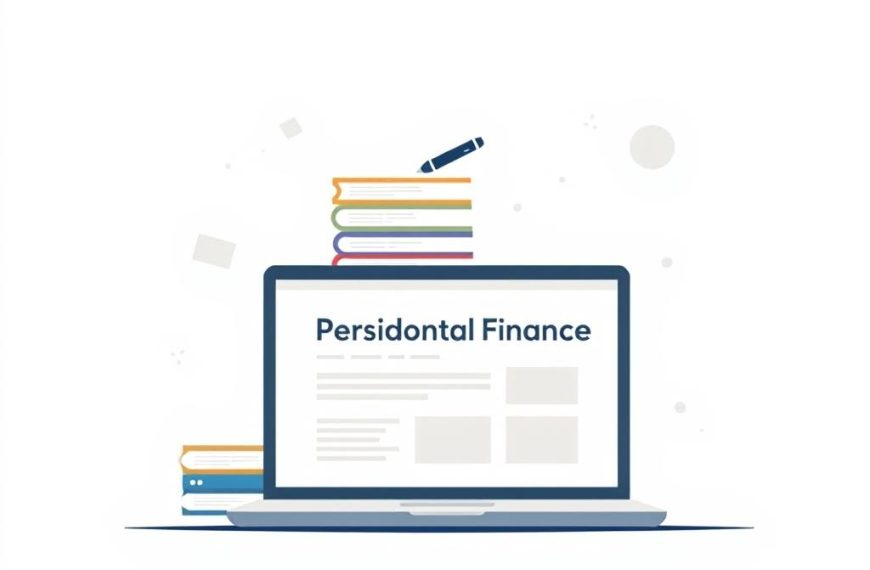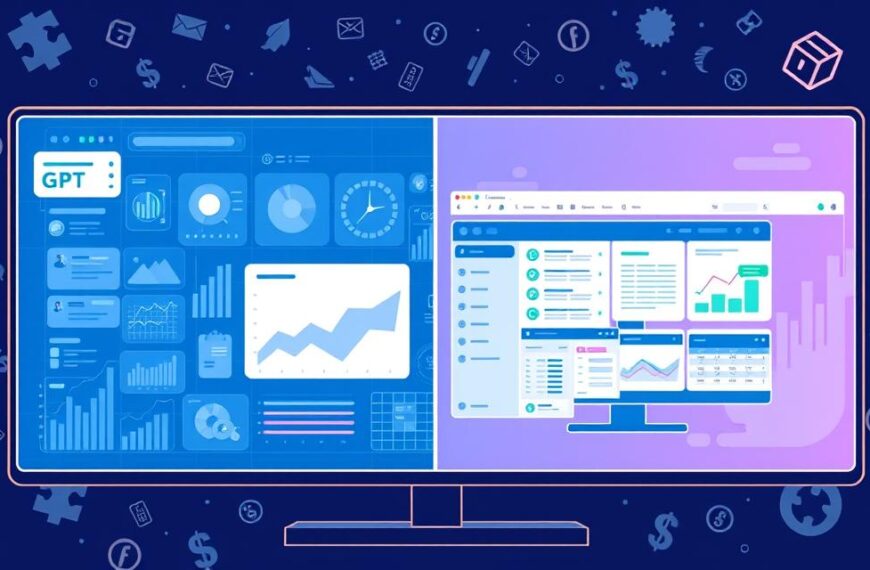A standard personal finance curriculum should equip students to handle finances wisely in their adult life. It’s important this curriculum covers key topics for smart financial decisions. Today, personal finance education is a part of the educational standards in 45 states.
In these states, 24 require a high school course in personal finance. Meanwhile, six states insist on specific courses for graduation. Studies show that financial literacy boosts knowledge and actions. This is especially true for students facing economic challenges and students of colour.
A comprehensive personal finance curriculum is crucial. It must cover financial responsibility, how to manage income, and the importance of budgeting. Students should also learn about saving, investing, and understanding credit and managing risk.
Importance of Personal Finance Education
Understanding personal finance is crucial in today’s complex financial world. It’s more than just managing money; it’s about making smart choices throughout our lives. Sadly, only seven states in the U.S. insist on a personal finance course for high school students. This lack of education points to a great need for more focused learning programs.
Why Financial Literacy Matters
Financial literacy gives people the tools to handle their money wisely. It helps with setting up budgets, dealing with debt, and understanding credit scores. But, many adults feel financially stressed, as noted in a FINRA report. By boosting our financial knowledge, we can make better choices about loans, savings, and investing.
The Role of Personal Finance in Long-Term Success
Learning about finance is key to managing money successfully over time. Those who know more can better assess investments and risks. Tailored education programs for different ages offer deep insights. They teach crucial things like debt handling and how to save. Community groups and schools, like the partnership between Commercial Bank of California and California State University Fullerton, play a big role in providing this education.
Also, studies show that knowing more about finance leads to smarter money habits. For instance, workers with low incomes who had financial training at work were likelier to save for retirement. This shows that the right educational efforts can really make a difference, helping people and the economy to thrive.
Key Components of a Standard Personal Finance Curriculum
A comprehensive personal finance curriculum is key. It includes learning about financial responsibility and making smart choices. This helps shape the financial futures of young adults. Students understand the impact of their choices through this crucial part of learning.
Introduction to Financial Responsibility and Decision Making
This part teaches students about financial responsibility. They learn that every choice has a financial consequence. Through activities like the Budget Game, students face real scenarios. They must make smart spending and saving choices.
Understanding Income and Careers
Learning about income and careers is essential. It covers important topics like gross and net income and the types of earnings. Students discover how different jobs and skills influence income. This helps them think about their future careers.
Budgeting and Spending Basics
Budgeting is fundamental in personal finance education. Students learn to make and follow a budget. They learn the difference between needs and wants. Using tools like the Budget Game, they understand various expenses. This prepares them to handle everyday spending better.
Savings Strategies and Goals
Learning to save and set financial goals is crucial for securing one’s financial future. Students explore different ways to save for short and long-term goals. They learn about the power of interest through the Budget Game. This helps them see how saving affects their financial stability in the future.
Topics to Be Covered in Personal Finance Education
Understanding core personal finance topics is key for students. A solid curriculum helps them learn about earning income, managing credit, investing, and risk management. These are essential for their financial future.
Earning Income
Earning income is a basic part of personal finance education. Students need to know how to get different sources of income and explore job opportunities. They should also learn strategies to increase their income.
Managing Credit
Learning to manage credit is vital for financial responsibility. Teaching about credit scores, borrowing impacts, and avoiding too much debt is important. Students will learn about various consumer credit types, like credit cards, and their features.
Investing Basics
Teaching students the basics of investing is key to building wealth. They should learn about different ways to invest, risk and return, and how to assess a company’s financial health. Knowing how to make smart investment decisions is crucial for their future success.
Risk Management and Insurance
Students need to understand risk management and insurance. They should know how to protect their financial health by recognising risks and choosing the right insurance. Learning about debt and how to manage it prepares them for financial challenges ahead.
Implementing a Standard Personal Finance Curriculum
Introducing a standard personal finance curriculum needs a well-thought-out plan from schools and educators. They must work together across various departments to include personal finance in all areas of learning. It’s also vital to give teachers professional development opportunities to boost their ability to teach finance skills.
Strategies for Schools and Educators
Schools have multiple ways to incorporate personal finance education successfully. By December 2023, half of the states made it a goal to offer personal finance education before finishing high school. This is up from only eight states in 2021, showing more people see the value in learning about finances. School leaders might need to adjust timetables for a semester-long personal finance course, following new laws.
- Recruit educators with interest and expertise from diverse departments to expand the teaching of personal finance.
- Provide continuous support and access to quality educational resources to empower teachers.
- Implement a cumulative approach to personal finance education starting from prekindergarten through high school, with a strong focus in the latter two years.
Using Available Resources and Tools
Educational resources are key to effectively starting personal finance programmes. Grants and tools help schools build their curriculum and train educators, often at no cost. Groups like the Council for Economic Education and Next Gen Personal Finance are very helpful.
Online games from Next Gen Personal Finance make learning about money management fun for students. These educational resources are not just fun; they also teach valuable financial skills. According to Kerri Herrild, a personal finance teacher, using real-life money situations can help students avoid debt in the future.
States like Ohio are leading the way with required personal finance courses for high school students. This move reflects a wider appreciation for financial education. Choosing high-quality resources, such as the NGPF curriculum used by over 70,000 teachers, is crucial for impactful learning experiences.
| State | Personal Finance Education Status | Key Statistics |
|---|---|---|
| Ohio | Guaranteed one-semester course implemented | Over 2,600 teachers using NGPF curriculum; 459 teachers completed NGPF professional development |
| Montana | Research on best practices for implementation | Focus on effective teaching strategies and curriculum development |
| National Trend | Increased state commitments to personal finance education | Half of states have committed, with nearly 90% of adults supporting mandatory financial education |
National Standards for Personal Finance Education
The importance of teaching personal finance in schools cannot be overstated. The Jump$tart Coalition’s guidelines give a robust framework for creating teaching plans. These plans are both informative and related to real life. By using these standards for personal finance, schools can make sure students learn vital money skills during key growth stages.
Overview of the Jump$tart Coalition Guidelines
The Jump$tart Coalition has set out key areas of knowledge and skills for K-12 students. These include budgeting, saving, credit management, and investing. These standards help make teaching consistent across different schools and set a clear learning goal. They highlight the importance of students getting a half credit in personal finance by 2027 to graduate. Teachers have tools like the CSDE Financial Literacy 9-12 Model Curricula and NextGen Personal Finance, making it easier to meet these guidelines.
Importance of Adhering to Established Standards
Following national standards for personal finance education is crucial for high-quality teaching. Schools that use Jump$tart Coalition’s guidelines can better measure student progress. This prepares them for real financial decisions. For example, in California, graduating requires a semester of economics. This policy helps ensure students get a comprehensive financial education. Bodies like the Council for Economic Education and the Consumer Financial Protection Bureau back these standards. They keep financial literacy a top priority in schools. With a solid groundwork in these standards, students can grow to be economically independent adults.
Conclusion
It is vital for students to learn about personal finance from an early age. This knowledge equips them to manage their money well in the future. Currently, only 31% of young Americans feel their high school taught them good financial habits. This shows a big gap in financial education that we need to fill.
The world of money is getting more complex. It’s important that financial education keeps up with these changes. By doing so, students will be ready to handle money matters with confidence. Teachers, policymakers, and communities need to work together. Their goal should be to make financial literacy better for all students.
Having good financial education can make a big difference. It can help improve credit scores and lower the chances of money troubles. Investing time and resources in teaching financial planning is crucial. It prepares young people for a financially stable and successful life. To learn more about what makes financial planning work, click here.
FAQ
What is a standard personal finance curriculum?
A standard personal finance curriculum is an educational plan. It helps students learn how to handle money wisely. They learn about making budgets, saving, and investing. Understanding credit is also covered.
Why is personal finance education important?
Personal finance education is key as it builds financial literacy. It helps people make smart money choices all their life. This knowledge leads to better financial habits and success.
What key components should be included in personal finance education?
Important parts of personal finance education include learning to be financially responsible. It also teaches about income, budgeting, and how to save. These parts help students face financial challenges well.
What essential topics need to be covered in personal finance courses?
Must-learn topics in personal finance include how to earn and manage money. Also, how to understand credit and the basics of investing. Plus, learning about risk and insurance is vital. These help students manage their future finances.
How can schools effectively implement a personal finance curriculum?
Schools can bring in a personal finance curriculum by working together. They can use educational tools and platforms. It’s also good for teachers to get training to improve their skills in teaching finance.
What are the Jump$tart Coalition guidelines?
The Jump$tart Coalition sets national standards for teaching finance. These guidelines show what students need to know at different stages. They help make sure schools teach finance well and consistently.
Why is it important to adhere to established financial education standards?
Following set standards for teaching finance matters because it makes sure students get a good education. It helps teachers track how students are doing. This ensures everyone learns important financial basics well.


















